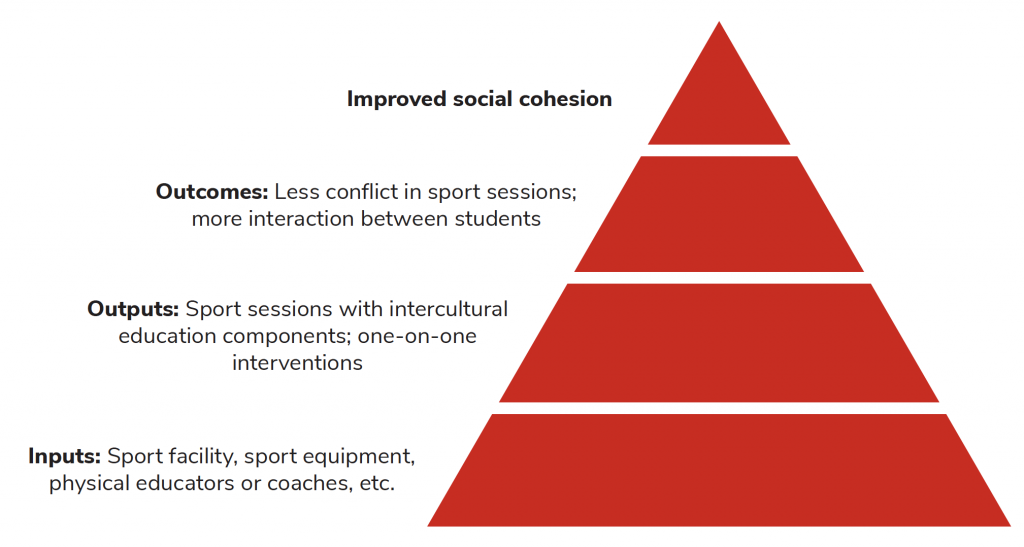Once you have defined the focal problem, you need to develop a clear long-term goal that would help address this problem and map out how to achieve that goal. One common method to do this is known as Theory of Change. Theory of Change defines long-term goals and then maps backward to identify necessary preconditions for success (Elsemann et al., 2011; SELA Advisory Group, 2009). Therefore, as with the above Problem Tree, Theory of Change is also useful both in the planning of a series of sessions or broader program, as discussed in Unit 3.
Moving away from the goal, you should then map out the concrete outcomes (e.g. changes, learnings, competences, experiences) that would help lead to the long-term goal. Then, you should think about the kind of outputs (e.g. services, sessions, activities, mentoring) that would help foster the desired outcomes. And, finally, you should consider the inputs needed (e.g. resources, staff, time) to produce the required outputs.
Mapping out such a Theory of Change will help build a concrete, logical plan for how to address the identified focal problem and, in turn, serve to develop relevant indicators, as we discuss below.
